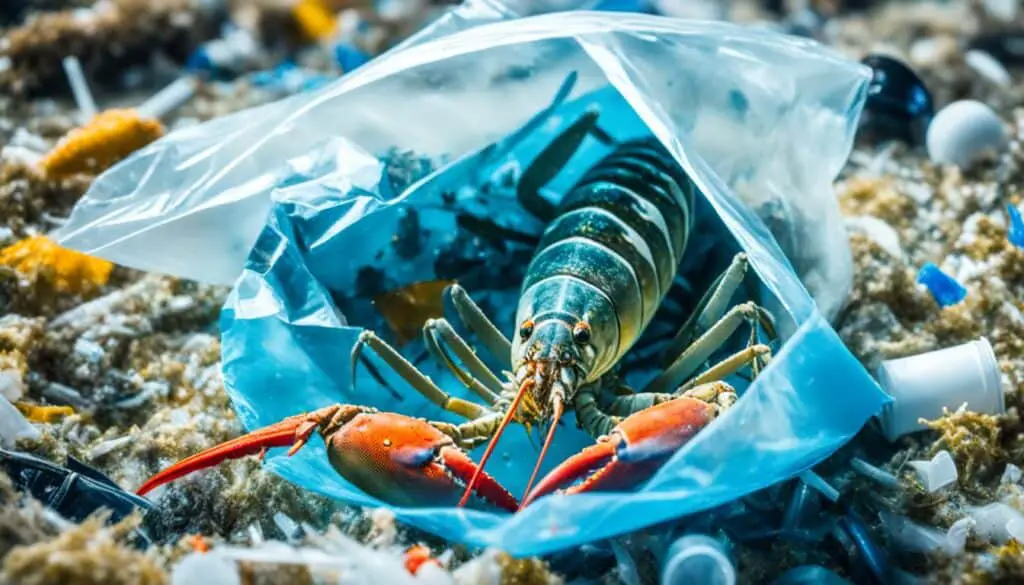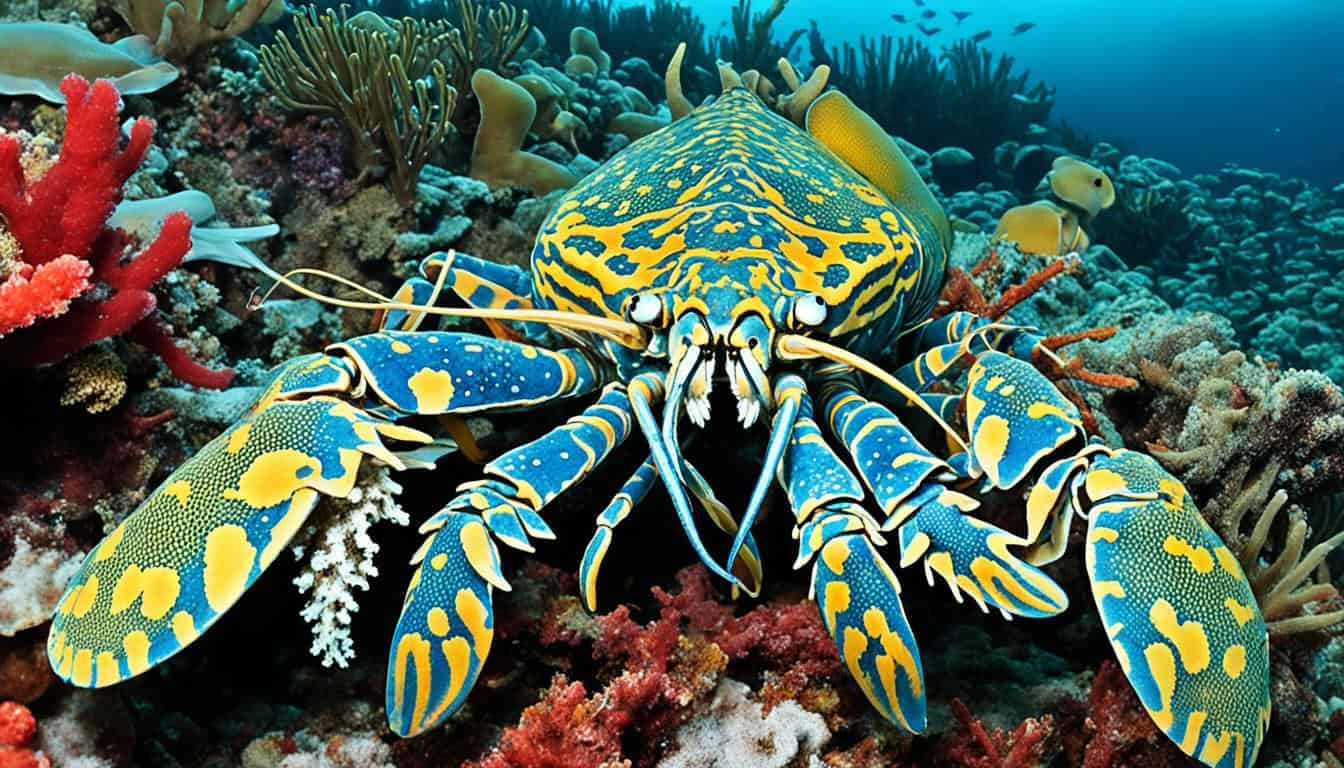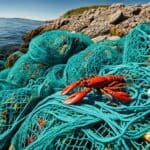Lobsters are key to marine life and local economies. But, what dangers do they face? The lobster population is dropping due to several reasons. It’s important to know these threats for everyone, from seafood lovers to fishermen.
This article will explore major threats to lobsters, like climate change, overfishing, and destroying their homes. These threats harm lobster numbers and the jobs tied to them.
Understanding Lobster Populations
The state of lobster populations is crucial to discuss. It affects the economy and local communities a lot. With ups and downs in lobster fishery statistics in the United States, it’s key to understand how these changes impact lobster stocks.
Lobster fishery statistics in the United States
In recent years, the lobster fishery has seen growth and ups and downs. For example, in Maine, the industry has supported thousands of jobs and made a lot of money. But in 2022, the revenue dropped a lot compared to before. These stats are key for checking the economic health and figuring out why lobster populations are declining.
Importance of the lobster industry to coastal communities
The lobster industry is vital for coastal communities. It provides important jobs and keeps cultural traditions alive. Families count on this industry for their income and food security. The community’s dependence on lobster fishing shows its big importance. It’s crucial to watch and tackle the challenges the lobster population faces.
What threats do lobsters face?
Lobsters face many challenges that affect their numbers and survival. It’s important to know these threats to help protect them.
Key challenges impacting lobster sustainability
Climate change is a big threat to lobsters. Rising ocean temperatures and acid levels harm their homes and health. This makes it hard for them to survive.
Overfishing is another big problem. Some fishing takes too much, harming lobster numbers. This focus on quick profits can lead to empty oceans in the future.
Loss of their homes also hurts lobsters. Pollution and coastal development destroy their living spaces. This makes it harder for them to reproduce and survive.

| Challenge | Description | Impact on Lobsters |
|---|---|---|
| Climate Change | Rising ocean temperatures and acidification | Disrupted ecosystems and increased disease susceptibility |
| Overfishing | Sustainable fishing practices not prioritized | Exacerbated lobster population decline |
| Habitat Destruction | Coastal development and pollution | Impairment of reproductive success and habitat loss |
The Impact of Climate Change on Lobsters
Climate change is changing the balance in marine ecosystems. For lobsters, it brings big challenges like rising ocean temperatures and ocean acidification. These changes threaten their survival and how they reproduce. It’s important to understand these issues for the future of lobsters and the fishing industry.
Effects of rising ocean temperatures
Rising ocean temperatures affect lobsters’ behavior and where they live. They can make lobsters grow and reproduce more, at first. But, this growth might not last.
As temperatures keep going up, lobsters may not be able to live in the warmer waters. This could make them less likely to survive.
Consequences of ocean acidification
Ocean acidification, caused by more CO2 in the ocean, adds another problem for lobsters. It makes it hard for them to build strong shells. A weak shell makes lobsters more likely to be eaten by predators and stressed by the environment.
This shows we need to find ways to help lobsters and their homes deal with climate change.
| Factor | Positive Effects | Negative Effects |
|---|---|---|
| Rising Ocean Temperatures | Increased growth and reproduction | Adaptation challenges and potential population declines |
| Ocean Acidification | None | Weakened shells and increased vulnerability |
Overfishing of Lobsters
The overfishing of lobsters is a big problem. It hurts their numbers a lot, especially in areas where management fails. We need to understand lobster fisheries to help these valuable species.
How overfishing contributes to population decline
Overfishing can cause lobster numbers to drop sharply. For example, in southern New England, numbers fell by up to 78% because of poor management. When we take too many lobsters, the ones left can’t easily make more.
This can harm the whole ecosystem. It upsets the balance needed for a healthy ocean.
Regulations and management practices in place
Good management is key to stop overfishing of lobsters. Rules like size limits and protecting young lobsters help keep their numbers up. In places like the Gulf of Maine, these efforts have made lobster stocks more resilient.
We must keep up with these sustainable practices. This is crucial for the recovery and long-term health of lobster fisheries.
Habitat Destruction
Habitat destruction is a big threat to lobsters, affecting their life cycles. Coastal development is a main cause of habitat loss for lobsters. As cities grow near the coast, natural areas are changed for homes and businesses. This harms the places lobsters need to live and survive.
Causes of habitat loss for lobsters
Coastal development includes building piers and marinas and polluting waterways. These actions upset the balance in lobster ecosystems. It makes it hard for lobsters to find places to breed and eat. Also, bad fishing practices erode habitats lobsters depend on, making things worse.
Effects of coastal development on lobster ecosystems
Habitat loss has big effects, leading to fewer lobsters and less food. When marine habitats are damaged, lobsters compete more for food and have fewer safe places to grow and breed. This can hurt not just lobsters but the whole marine ecosystem.
Importance of preserving marine habitats
Preserving marine habitats is very important. Conservation and restoration efforts help lobsters and other sea life. By supporting these efforts, you can help ensure lobsters and other sea creatures can live in their natural homes.
FAQ
What are the main threats lobster populations face?
Lobster populations face threats like climate change, overfishing, and habitat destruction. Pollution, illegal harvesting, and human activities also affect them. It’s important to understand these threats for effective conservation.
How does climate change specifically affect lobsters?
Climate change harms lobsters by raising ocean temperatures and making the water more acidic. These changes mess with the ecosystems lobsters live in and make it harder for them to reproduce. They also become more likely to get diseases.
What role does overfishing play in lobster population decline?
Overfishing is a big reason why lobster populations are dropping. Fishing too much and not having good rules in some places make it worse. This leads to fewer lobsters overall.
What measures are being taken to protect lobster populations?
Conservation efforts include setting size limits and protecting young lobsters. These steps help fight overfishing and support sustainable fishing. They aim to keep lobster populations safe.
Why is habitat destruction a concern for lobsters?
Habitat destruction, from coastal development and pollution, reduces where lobsters can live and breed. Losing these important places makes it harder for lobsters to survive.
How does pollution affect lobster populations?
Pollution harms lobsters by making their homes worse and adding dangerous substances to their environment. It can hurt their health and ability to have babies, which threatens their numbers.
What are some conservation efforts being implemented to support lobsters?
Conservation efforts include fixing habitats, making fishing rules that help the environment, and teaching people about responsible lobster fishing. These actions aim to keep lobsters safe for the future.







